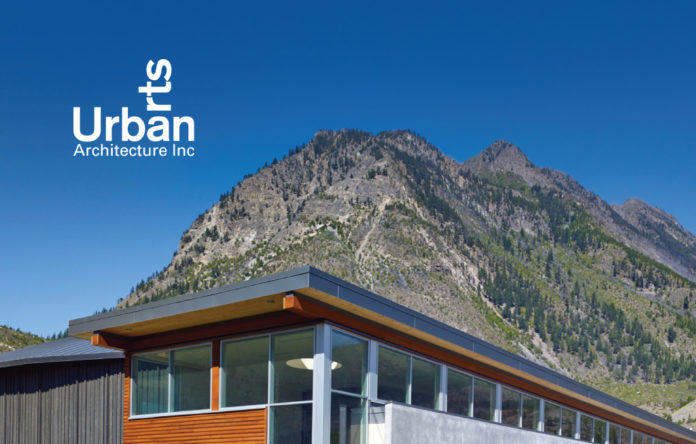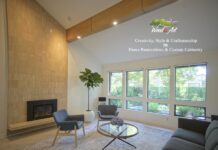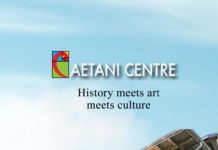
Building community
Urban Arts Architecture Inc. (UAA) is an award-winning Vancouver-bases architectural firm that specializes in community and cultural projects across BC and the Yukon. They are a full-service firm that takes a “creative, collaborative, and team-based approach” to all their projects. Working closely with their clients every step of the way, they constantly engage stakeholders at all levels to ensure that their architecture reflects the needs and wants of the end-users.
The team at UAA is led by four principals – including founders Jennifer Marshall and Shelley Craig, as well as Jordan Edmonds and Ouri Scott – all of whom bring expertise in architectural planning, design, and consultation services to their roles. The firm’s work varies across wide range of industry sectors and on a variety of project types, including everything from educational facilities, cultural projects like museums, galleries, and libraries, to social housing projects. While UAA’s work varies, it has a common focus on “building community.”
“We’ve always been very focused on community building,” says Jennifer Marshall, Principal. “For a long time, our slogan was ‘We build community.’ That’s a reference to both our process – as we highly value community engagement – and the actual buildings we design – which are almost always community facilities.”
Founding architects Jennifer and Shelley first met studying architecture at the University of Waterloo. Before officially teaming up, they both spent the early years of their careers working for other firms, and they both spent over a decade each as principals of their own firms. In 2006, they finally decided that “the world was ready for a two-women led firm,” and Urban Arts Architecture was born.
In 2020, UAA expanded their leadership team to include Jordan Edmonds and Ouri Scott. Both had been associates with the firm for a number of years, and both share the firm’s passion for sustainable architecture and community-focused design.
Jordan, for his part, has extensive experience working on complex, institutional, healthcare, housing, and community projects. He brings a high level of technical and sustainable development expertise to the firm’s projects. Ouri, the first indigenous female architect in BC, brings an Indigenous perspective to projects including advising on process and protocols, developing culturally appropriate engagement approaches, and innovative design strategies.
Urban Arts Architecture Inc. focuses on projects that contribute to the wellbeing of the communities in which they are located. No matter the sector they are working in, however, and no matter the scope of the project, Jennifer believes clients choose UAA for the same reasons:
“We’ve become known for truly listening to our clients, and giving form to our clients’ goals,” she explains.
UAA leads a process with clients that enables deep listening and sharing, which is then translated into a sustainable design that reflects the clients’ goals and needs.
“We actually just did an exercise with a communication firm where they called our clients and asked them why they work with us, and our clients were all really clear – they felt that we truly listened. They felt the projects were their projects. We may have had a hand in them, and we did a good job with the design, but the projects were theirs.”
Jennifer further credits that loyalty to the cost-efficiency of the firm’s work. The firm does a lot of work on public buildings where they have to go through the RFP process, so they are very conscious of making sure their designs are economical and buildable.
“We’ve always had the philosophy that if something is well-considered or well-designed, that doesn’t mean it has to be expensive,” Jennifer explains. “It can just be really, really well thought out. That’s what we try to provide.”
“We’re also really rigorous with our drawings and construction document,” she adds. “We get a lot of compliments from contractors and building permit authorities. We make sure there’s a lot of clarity. We take a lot of care with that.”
By taking that care, UAA has been able to build some very strong relationships with builders and building authorities. In general, the firm’s aim is to build strong relationships with all project stakeholders, especially the community stakeholders.
“Community engagement is at the foundation of everything we do,” Jennifer says. “It doesn’t matter whether we are doing a housing project, a library, a community hall in a small community, or something at a university – we always gather all the stakeholders and we go through a series of exercises. Sometimes that can be a very small group, sometimes it can be 100’s of people. We always approach it the same way.”
“We start with a visioning exercise where we collectively create a vision for the project, where we figure out what are the community’s priorities and mission and goals,” she explains. “Then we make sure that we deliver on those goals. We make sure that everyone at our office understands how important it is we deliver on those goals. Ultimately, I think that’s at the root of our success.”
Communication, communication, communication
Over the years, Urban Arts Architecture Inc. has worked repeatedly Radium, a village situated in the East Kootenay region. One of their most well-recognized projects within the village is the 8,000 square-foot ‘Radium Hot Springs Community Centre and Library.’ For that project, UAA won a variety of accolades – including a ‘WoodWorks! Community Recognition Award’ for their exemplary use of wood in a community project, and a ‘SAB Green Building Award’ in recognition of the project’s energy performance.
The goal of the project, Jennifer says, was to create “warm, healthy and beautiful” indoor and outdoor spaces, and to “economically construct a valued community hall and library.” To achieve that goal, UAA selected wood as the primary building material in order to partner with local industry and support the Columbia Valley economy, as well as to demonstrate the use of renewable resources and innovative replicable building systems.
From a design perspective, Jennifer says they wanted to create “true product of the Valley” and to reflect a “simple agrarian sensibility while highlighting the views to the mountains beyond.” She says the design process reflected “the local hands-on community build culture” of the village.
From early on in the process, the project team had the goal to create a ‘100-mile building’ – i.e. a building where all of the materials are sourced from within a 100-mile radius of the construction location. The goal of a 100-mile building is to promote the local economy and to reduce the carbon footprint of shipping materials from all over the world.
In the case of the Radium Hot Springs Community Centre and Library, UAA wasn’t able to source literally everything from within 100 miles, but they got pretty close – with an estimated 80 per cent of the materials from the surrounding area.
“It’s the true definition of sustainability in that regard,” Jennifer says. “It’s by the community and for the community.”
“That made for a very interesting and unique process,” she adds. “Instead of starting with community consultation, we started with an ad in the newspaper. We asked, ‘who here has material we can use to build this building?’ We also reached out to local suppliers, local manufacturers, and local tradespeople. We got them to come to a workshop so we could figure out together ‘What is the optimal way to build this building?’”
From that process, the team at UAA met Sigi Lieberman, the founder of International Timberframes, a company based in nearby Golden, BC. International Timberframes was ultimately selected as manufacturer and installer of the innovative stacked dowel laminated timber (DLT) panels for the roof system, and the installer of the Glulam beams for the main structure.
At the time, International Timberframes was a relatively small company, but it has since grown. UAA is now working with them on a new manufacturing plant.
Jennifer credits the success of that relationship – and UAA’s successful relationships with builders in general – to “communication, communication, communication.”
“One of the key things we do when we start working with a contractor is we establish that we’re on a team together,” she says. “We start by explaining why the building is the way it is and the importance of certain details. That way, we can avoid the problems that come with people making changes on site because they don’t understand the context of why certain things are the way they are.”
“We make sure we’re all in the same boat paddling in the right direction,” she adds. “And we put a lot of work into our communication in order to make sure we stay that way. We emphasize how important it is to communicate and be responsive to each other. If there are ever any issues, we want them to get brought up and get them dealt with ASAP.”
“That has to start with us,” she adds. “I always tell my staff, ‘If you haven’t heard from someone, if someone’s not being responsive, then pick up the phone! Have a conversation. That’s how you’ll find out what’s going on.’”
Again, the relationship with International Timberframes went so well that Sigi commissioned UAA to design their next manufacturing plant. And that’s not the only repeat relationship that resulted from that project – since fully delivering the Community Centre and Library, UAA has also worked with the community of Radium again. For example, they recently collaborated with a landscape architect to design a masterplan for the park in which the community centre is located and they built ‘Radium Stadium,’ which is an outdoor ice rink and concession stand.
Esemkwu
Currently, Urban Arts Architecture is working on a number of affordable housing projects, as they want to do their part to help address the affordable housing crisis.
The firm is also currently working on the ‘Aboriginal Land Trust Housing + Healing Centre Development’ – a ground-breaking project in the heart of Vancouver’s Downtown Eastside that aims to set a “a new standard for meeting the needs of Indigenous people for homes and healing.”
That project combines permanent homes for Indigenous families and supported housing in self-contained units for adults, along with a ‘Healing Centre’ that will provide a wide range of care for “mind body and spirit.” Key community spaces will include spaces that are culturally appropriate for Indigenous ceremony and celebration, education spaces, meeting rooms, a ‘Community Food Centre,’ and healing spaces for Indigenous health practises. These community spaces will be supported by outdoor spaces for gathering, play and healing.
In addition to providing much-needed housing and community facilities, the goal of that project was also to honour local house nations and demonstrate care for the residents and the neighbourhood.
“There’s a Coast Salish practice called ‘Esemkwu,’” Jennifer explains. “When a baby is born, you wrap them in a blanket. When someone gets married, you wrap them in a blanket. When someone is being honoured, you wrap them in a blanket. It’s something that shows caring and honouring. So we’ve literally wrapped our building in these blankets.”
Renowned Coast Salish artist Deborah Sparrow was commissioned to weave two blankets for the project. UAA interpreted those blankets in brick on the façade of the project.
UAA is also currently working with the Aboriginal Land Trust on a new social housing project in the same area. That project – called the ‘Ch’ich’iyúy Elxwíkn Affordable Leasehold Homeownership Project’ – will include 172 units of housing along with social services and retail space. The goal of the project is to give low-and-middle-income people a path to owning their own homes. The project was designed to “honour and celebrate Indigenous matriarchs,” and one portion of the building is for elder Indigenous women specifically.
The list goes on – UAA is working with a number of Indigenous groups on a number of housing projects around the province, and their goal is to continue pursuing those projects moving forward.
“We never set out to do housing, but this kind of housing has a lot of community involved in it, so it’s perfect for us,” Jennifer says.
At the same time, UAA also hopes to continue working on more traditional community buildings. They believe those kind of public buildings are important to the development of sustainable communities.
“Housing units themselves – especially affordable housing units – are getting smaller and smaller, so these public spaces are becoming more and more important to society and to healthy communities,” Jennifer says. “As we shrink our living spaces, we need places to go – and we need places that don’t always cost you money to be there. We believe those spaces are very important and we want to do our part in creating them.”
“We also want to continue to bring an Indigenous perspective to our practice, and to continue to decolonize our practice as we work towards reconciliation,” she concludes. “We put a lot of focus on that. We’ve done a lot of education work with our staff.”
“Some of that has been fun – we went out and paddled with a local Indigenous community around the local inlet and we heard stories from elders while we were doing it. Some of it has been hard – we’ve done some decolonizing workshops where we’ve had to dig deep and look inward. We believe that it’s all been worth it, though, because it’s made us better as architects. Working on reconciliation and incorporating indigenous perspectives has actually made all of our projects better.”
For more on Urban Arts Architecture, their team, their services, their past and present projects, and their latest news – and to contact Jennifer and her team today – visit http://www.urban-arts.ca/








